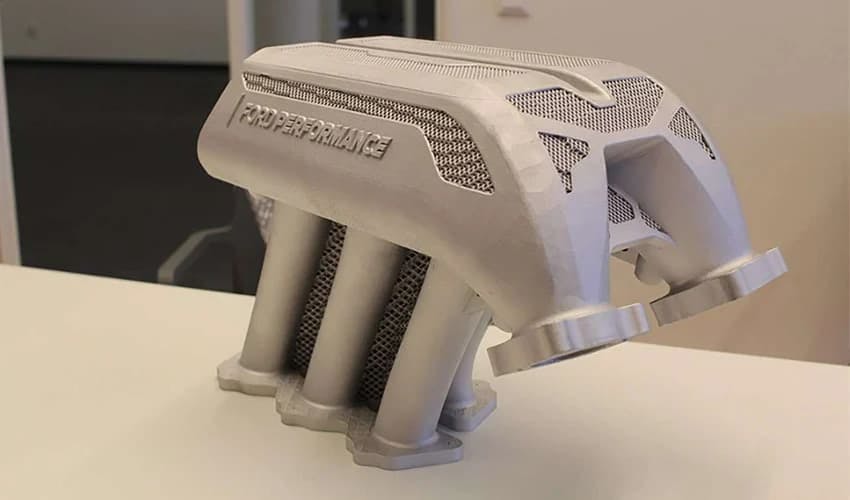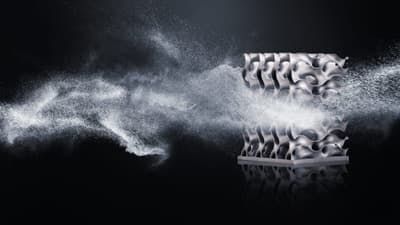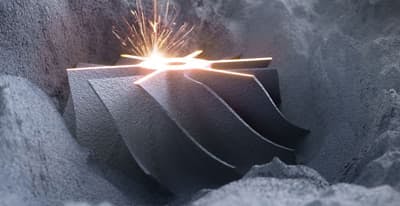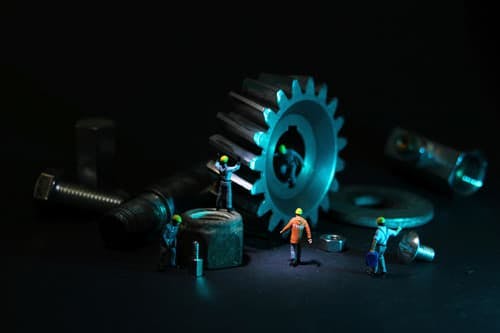Introductin to Main Types of Additive Manufacturing Technology
Additive Manufacturing (AM) refers to the process of manufacturing parts or objects by means of material accumulation based on 3D model data. 3D printing refers to the process of manufacturing parts or objects by means of material accumulation using print heads, nozzles or other printing technologies. This term is usually used as a synonym for additive manufacturing, so it is also called "3D printing".
It is manufactured in the form of building up components in the form of layer-by-layer deposition. At the same time, seven different types of additive manufacturing technologies are recognized by ISO/ASTM internationally:
- Selective laser melten - SLM technology to build the metal powder into high performance metal parts;
- Light curing - UV light selectively cures the liquid resin through point-by-point or layer-by-layer illumination;
- Powder Bed Fusion (PBF) - uses an energy source (usually a laser or electron beam) to fuse powdered metals or polymers together;
- Binder jetting - the binder deposited on the metal powder or sand forms the geometry; for metals, sintering is usually required after printing to melt the powder;
- Material jetting - droplets of material are precisely deposited to create a geometry;
- Sheet lamination - stacking and laminating sheets of material together by ultrasonic welding, brazing, adhesives or chemical means;
- Material extrusion - materials such as polymer filaments or granules are heated and extruded through a nozzle;
- Directed Energy Deposition (DED) - Metal powder or wire is fed into a molten pool created by a laser or electron beam in a process similar to welding.
Alternatively, "Hybrid Manufacturing" describes a process that combines additive manufacturing with traditional subtractive techniques. For example, a CNC machine can be equipped with a DED print head, enabling the same machine to both 3D print material and mill.
At the same time, Antarctic Bear needs to be particularly emphasized that each of the seven series has a different 3D printing sub-category. For example, Directed Energy Deposition (DED) can use powder or wire to make metal parts. Light curing includes categories such as stereolithography (SLA) and digital light processing (DLP). SLA is point scanning, while DLP cures one layer at a time.
Machine builders may also have proprietary processes or use different terminology, the following are some specific types of technology in addition to these 7 categories of 3D printing processes.
1. Metal 3D Printing(SLM)
Metal 3D printing is a technology of digital thermal processing. At present, 3D printing technologies for metal preparation mainly include: Selective Laser Melting/Sintering (SLM/SLS), Electron Beam Selective Melting (EBSM), Laser Near Net Shaping (LENS), etc. . Compared with traditional processes, metal 3D printing has the advantages of direct molding, no need for molds, personalized design and production of complex structures, high efficiency, low consumption, and low cost. However, because it is digital thermal processing, the deformation cannot be eliminated, and the amount of deformation needs to be controlled from the process and experience, and finally it must be processed by post-processing technology such as CNC machine tools.
Application of metal 3D printing materials
The application fields of metal 3D printing materials are quite wide, such as petrochemical engineering applications, aerospace, automobile manufacturing, injection molds, light metal alloy casting, food processing, medical treatment, papermaking, power industry, jewelry, fashion, etc.
However, because of the material properties of metal 3D printing materials, they all have specific application areas. Therefore, the process of metal 3D printing material selection is a process of weighing multiple factors. Moreover, 3D printing metal cannot be determined solely by the parameters of metal 3D printers. Each metal material has its own limit points, including application, function, stability, durability, aesthetics, and economy. factors to consider.
What are the tough challenges in metal 3D printing?
First of all, although 3D printing is a free-structure manufacturing technology, many processing methods are required to avoid the difficulties of post-processing after 3D printing. It is necessary to use the CNC machine tool processing technology of traditional manufacturing to solve the deficiencies in the post-processing process of 3D printing.
Second, metal printing will cause the later parts to be unable to be processed due to support problems. Because 3D printing adopts the technology of layering materials, some parts may be deformed due to gravity during the production process, so supporting materials are required. After the inner cavity and other parts of some complex components are formed with these supporting materials, the supporting materials are not easy to remove, which is an important problem that needs to be solved in metal 3D printing.
Third, you need to be familiar with the material. There are many kinds of metal materials, and different materials have different properties and different application ranges. Taking 3D printed aerospace parts as an example, the metal parts used in aerospace are all in extreme environments and have the characteristics of strong corrosion resistance, high temperature resistance, and high metal strength. Using 3D printing control to manufacture metal parts.
Fourth, the high cost of metal 3D printing materials restricts the popularization and promotion of this technology. There are two main reasons for the high cost. On the one hand, most of the domestic metal 3D printing materials rely on imports. On the other hand, the development of new metal printing materials in the early stage requires a lot of scientific research funds and human and material resources. However, the development of special metal 3D printing raw materials is an inevitable requirement to promote the development of metal 3D printing, and it is also an inevitable trend to improve the 3D printing industry chain.
2. Digital Light Synthesis (DLS)
Digital Light Synthesis (DLS) is a proprietary resin-based 3D printing process developed by Carbon.
How does DLS work?
Digital light synthesis is based on stereolithography. Both processes use UV-curable resins. Unlike stereolithography, however, Carbon's process does not pause after each layer. Resin continuously flows through a "dead space" above the oxygen-permeable membrane, and an ultraviolet image representing the cross-section of the part is projected onto the oxygen-permeable window to cure the resin. When the build platform is raised from the resin vat, the parts are upside down.
What materials can be used?
Carbon offers DLS resins including elastomers, flexible, rigid and medical grade polyurethanes, silicones, cyanate esters, epoxies, urethane methacrylates and dental materials.
What post-processing is required?
After printing, take the part off the build plate and remove all supports. Some materials also require heat curing in the oven, which can take anywhere from 4 to 13 hours to complete. The heat initiates secondary chemical reactions that increase the strength of the part, requiring no further post-processing after cleaning and curing.
Why use DLS?
The continuity of Carbon’s DLS 3D printing process avoids layer lines in the part, providing a surface finish comparable to injection-molded parts. The DLS parts are also said to be waterproof and isotropic, with equal strength in all directions. In addition to providing a way to make prototypes, it can also be used as an alternative to making production parts.
3. Nanoparticle jetting (NPJ)
NanoParticle Jetting (NPJ) is a 3D printing process developed by XJet. This is a material jetting technique that uses a suspension of powdered material to build parts.
How does NPJ work?
NPJ jets a liquid containing suspended nanoparticles of metal or ceramic material to build the part, while jetting a support material. The molding process takes place in a heated bed at 250°C, allowing the liquid to evaporate as it is jetted, allowing the particles to adhere in all directions, and the printed 3D object body and support have only a small amount of binder in them.
What materials can be used?
Xjet supports nanoparticle jetting using 316L stainless steel and two ceramic materials (zirconia and alumina). The material is installed in the machine via the cartridge and requires no machining or handling.
What post-processing is required?
After printing, NPJ parts still retain a small amount of adhesive and may have support structures. The carrier material is water soluble and can be dissolved in a water bath. Machining or polishing can be done at this stage if desired.
Why use nanoparticle jetting?
This process is capable of making many small parts at once. According to XJet, the material jetting process can be controlled drop by drop, within ±25 microns for small parts and ±50 microns for larger MIM/CIM parts. The minimum feature size is 100 microns, and layer heights can be 8 to 10 microns, allowing for finer details.
Because NPJ uses suspended materials, there are no steps required for sieving and other powder processes. Materials can be printed in normal atmospheres without the need for special gases, vacuums or pressures, and are easy to recycle.
Applications for nanoparticle jetting include hearing aids, surgical tools, crowns, bridges and drill guides in the medical industry; high temperature and friction resistant parts for aerospace and automotive; and sensors for the electrical industry.
4. Ultrasonic Additive Manufacturing (UAM)
Developed by Fabrisonic, this process creates metal workpieces by fusing and stacking metal strips. The work is done on a hybrid machine that is capable of CNC milling of workpieces as additive manufacturing progresses. Building by stacking strips of metal allows for fast build speeds, making large parts practical.
How does UAM work?
In UAM, the materials are not melted, but are joined by ultrasonic welding. This welding uses high frequency vibrations to join surfaces while the metal remains solid. By welding layer by layer in this way, a solid part is built.
Under high-frequency ultrasonic vibration and constant pressure, the ultrasonic motion decomposes oxides through friction, making metal-to-metal direct contact.
Repeat this process until the solid part is constructed. CNC profile milling can then be used to obtain the required tolerances and the best surface finish of the part.
Why use ultrasonic additive manufacturing?
Hard metal exterior surfaces can be built on structures made from lighter metals to provide durability and lightweight parts. Alternatively, two distinct metals—such as titanium and aluminum—could be combined into hybrid layers, creating a structure that mixes the two properties.
This technology combines the practicalities of additive and subtractive manufacturing, allowing the fabrication of parts with complex geometries and internal channels. The fine dimensional accuracy and smooth surfaces of parts fabricated using UAM and machining demonstrate the possibilities of hybrid fabrication.
5. Selective Thermoplastic Electrophotographic Process (STEP)
Selective Thermoplastic Electrophotographic Process (STEP) technology, developed by Evolve Additive Solutions, combines 2D imaging with proprietary IP to precisely align incoming layers and bond them into fully dense final parts, which are isotropic Properties are said to equal or exceed injection molding.
What materials can be used?
The company says STEP's candidates are the same polymers that can be used for injection molding. However, delivering the material as a toner requires Evolve's proprietary materials engineering skills.
STEP machines have multiple print heads, which can allow for multiple colors in the part, but another possibility is the possibility of multiple materials. A wide variety of different polymers, applied at the voxel-by-voxel level, can achieve combinations of properties that cannot be achieved in any single material alone.
Why use STEP?
STEP provides a way to get thousands of plastic parts in a few days, while waiting for tooling to work can take weeks of lead time. And because there is no mold, the cost per part of the new technology is also lower than molding at this volume level.
This process can produce non-layered parts, and STEP mates the heated layer with the heated part, resulting in a more complete fusion than processes such as FDM.
6. Multi-Jet Fusion (MJF)
The process, a powder bed 3D printing process developed by Hewlett-Packard (HP), binds reagents and powders together in a process similar to binder jetting. Unlike point-to-point laser-based powder bed fusion systems, MJF selectively distributes fusion and refiner agents across the powder bed and uses infrared light to fuse the layers together.
The Multi Jet Fusion system consists of replaceable build units that can be moved between the MJF 3D printer and a separate post-processing station for rapid cooling and powder removal. This modular system allows the printer and post-processing station to run continuously while the build unit cycles through, speeding up part production.
What post-processing is required?
After the build is complete, the build unit (the entire powder bed with encapsulated parts) is removed from the printer and placed in a post-processing unit for rapid cooling. The build unit is then moved to a processing station, where the loose powder is removed by vacuum.
The final part is said to have a high-quality surface finish, fine feature resolution and more consistent mechanical properties compared to laser-based powder bed processes such as selective laser sintering (SLS). Also, because the heating is layer-by-layer and the powder fills under the part, MJF has a lower incidence of warpage than SLS.
To improve the surface finish, parts can be sandblasted and then primed or painted. Printed parts can be dyed or further processed if required by the application.
What materials can be used?
The Multi Jet Fusion is compatible with a range of HP thermoplastics, including High Reusability (HR) PA 12 nylon, HR PA 12 GB (glass bead reinforced nylon) and HR PA 11.
HP also supports the 3D material certification program and works with polymer 3D printing material suppliers to develop new materials. Materials partners include Arkema, BASF, Dressler Group, Evonik, Henkel, Lehmann & Voss & Co., Lubrizol and Sigma Design.
Why use Multi Jet Fusion
This process can rapidly produce functional prototypes and end-use production parts within a day. A single MJF printer can run almost continuously if the build unit is swapped out for post-processing every time a print is done. Used powder can be reused by recycling.
MJF's layer-by-layer fusion is faster than a point-by-point 3D printing system, and each layer is said to take the same amount of time to fuse, regardless of complexity. Using MJF you can nest parts vertically and horizontally, filling the entire build volume with individual individual parts. Multi Jet Fusion requires no tooling investment or minimum order quantities; these factors, combined with its speed, make the process competitive with injection molding in volume production.
What does Exzellenc do for metal 3D Printing
Exzellenc focus on the innovative metal additive manufacturing to build the high performance metal parts in various industries, where we serve our customers to help them achieve the printed metal parts with affordable cost and high quality. Our experts consultation is for free, please contact us when you need metal 3D printing and CNC machining services.





